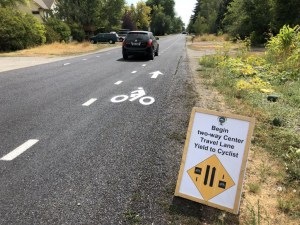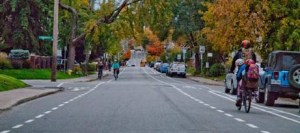Bike Shops are Essential Businesses During Stay-at-Home Orders
UPDATE March 31, 2020: As reported in the CalBike Report today, employees who repair and maintain bicycles and support those services are essential workers according to the U.S. Department of Homeland Security guidelines and in California which references those guidelines. Below are the two relevant passages. Thanks to the 2,850+ people who added their names to our letter.
- Employees supporting personal and commercial transportation services – including taxis, delivery services, vehicle rental services, bicycle maintenance and car-sharing services, and transportation network providers.
- Employees who repair and maintain vehicles, aircraft, rail equipment, marine vessels, bicycles, and the equipment and infrastructure that enables operations that encompass movement of cargo and passengers.
————–
Bicycling is indispensable during this crisis. Californians rely on our bikes for transportation to provide essential services during this challenging time. By staying off of transit we promote social distancing and create space for more social distance among those who have to take transit. Bicycling is also a safe way to get exercise and fresh air. Riding improves our physical and mental health during this period of social isolation.
We are asking the Governor and the State Public Health Officer to clarify the existing stay-at-home order to declare that bicycling is an essential activity and bike repair shops are essential businesses. We want them to make it clear that bike shops may remain open during the COVID-19 outbreak.
The following cities and counties have declared that bike shops are essential businesses that may remain open during the statewide stay-at-home order (updated March 23, 11:00 p.m.):
- City and County of San Francisco
- City of Los Angeles
- City of Berkeley
- Solana Beach
- Contra Costa County
- Marin County
- Napa County
- Sacramento County
- San Mateo County
- Santa Clara County
- Sonoma County
- Ventura County
Please join us in calling for this clarification by signing the form below.
Please do not contact the State Public Health Officer directly. We are trying to respect her time during this crisis.
The full text of the letter follows the form.
Keep bike repair shops open
Fill out the form below to join the sign-on letter.
March 20, 2020
Sonia Y. Angell, MD, MPH
Director, California Department of Public Health and State Public Health Officer
Dear Dr. Angell:
We are writing to request clarification of the stay-at-home order N-33-20 to specify that bike shops and mobile bicycle repair services are essential businesses.
We are grateful for yours and the Governor’s leadership in getting Californians to self-isolate and prevent the deadly spread of COVID19. We have supported that order, including by advising bike clubs to cancel organized rides because we believe that social distancing will be difficult among such groups.
However, solo bicycling is a permitted “outdoor activity” and incredibly valuable for mental and physical health. It is a lifeline for those who don’t own a car and should not take transit yet need to travel for work in an essential industry. Therefore, it is imperative that bike repair services remain open in order to service this transportation resource.
In response to significant confusion and concern, Mayors London Breed of San Francisco and Eric Garcetti of Los Angeles have each clarified that bike shops perform essential transportation services. In San Francisco, “bicycle repair shops and mobile bicycle repair companies“ are considered essential, while “social distancing and consistent cleaning requirements continue to be required.” In the City of Los Angeles, “bicycle repair shops” are listed along with auto service stations and related facilities as exempt from the “safe at home” order. The Counties of Santa Clara, Contra Costa, and Sonoma have also declared that bike shops are essential businesses.
It will be extremely helpful to have clarification and consistency at the state level. As it stands, Executive Order N-33-20 refers to federally designated essential industries including “transportation infrastructure” but bicycle repair is not included in the definition of “transportation infrastructure.” California should declare that bicycle repair shops and mobile bicycle repair operations are essential businesses that may remain open, provided they follow social distancing guidelines, in order to allow for the on-going maintenance of bikes.
Bicycling is a safe mode of travel in a pandemic and should be supported as a means of essential travel. Please clarify that the state’s stay-at-home order exempts bike repair shops as essential industries during this time.
Thank you, again, for your leadership in these difficult times.
Sincerely,

 “Edge lane roads have existed for more than 50 years in other countries around the world,” Williams noted. The Netherlands alone has over 800 km installed. In the US, he knows of about 30 edge lane projects. The largest number are in Minneapolis, which has seven or eight edge lane roads. “They tried them out. They love them,” he said of Minneapolis. “They’re rolling them out all over the place.”
“Edge lane roads have existed for more than 50 years in other countries around the world,” Williams noted. The Netherlands alone has over 800 km installed. In the US, he knows of about 30 edge lane projects. The largest number are in Minneapolis, which has seven or eight edge lane roads. “They tried them out. They love them,” he said of Minneapolis. “They’re rolling them out all over the place.”  We need edge lane roads in California. It’s the last important tool to add to the planner’s toolbox for safe streets. The stripes on edge lanes show all road users what is expected of them. They give people on bikes a space to ride and a line that they can expect motorists to avoid.
We need edge lane roads in California. It’s the last important tool to add to the planner’s toolbox for safe streets. The stripes on edge lanes show all road users what is expected of them. They give people on bikes a space to ride and a line that they can expect motorists to avoid.
